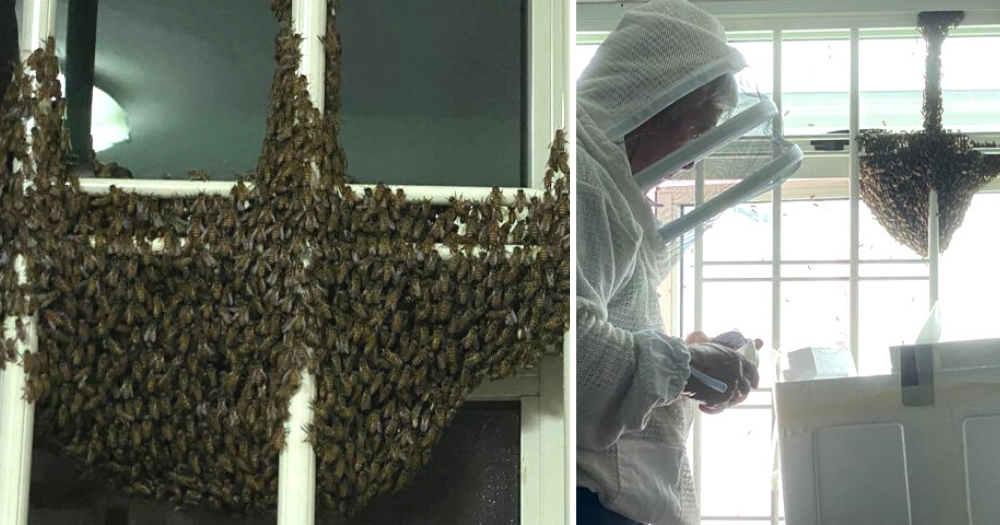One Punggol Edgefield Plains resident got a huge shock recently when a large swarm of bees appeared in her house.
The resident told Mothership that she had returned home from work to find the insects clustered around her bedroom window on the 16th floor.
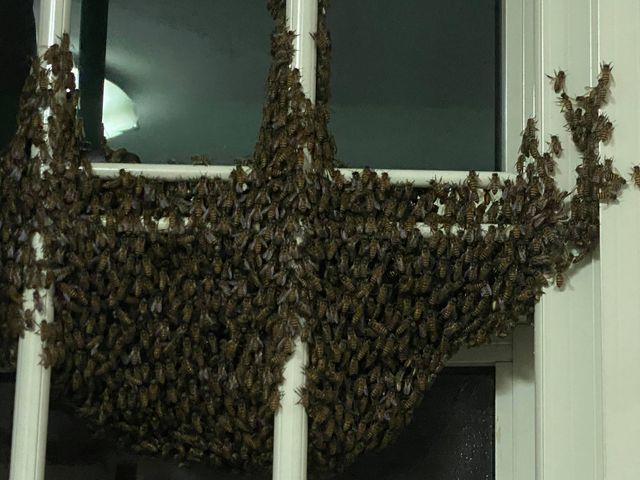 Photo from Mothership reader
Photo from Mothership reader
Feeling shocked and afraid, she contacted 995, and was directed to wildlife rescue organisation Acres.
As Acres typically handles injured wildlife, it directed the resident to beekeeper John Chong from BEE AMAZED Garden, who specialises in humane bee-removal services.
Chong advised her to leave the bees alone, and sent a beekeeper down the next day at 9am.
In the meantime, the resident slept in the living room.
Second batch of bees appeared
By the next day, it appeared from the resident's photos that the cluster of bees had grown even bigger.
The resident said that during this period, the other occupants in the flat kept their windows closed so stray bees would not fly in from outside.
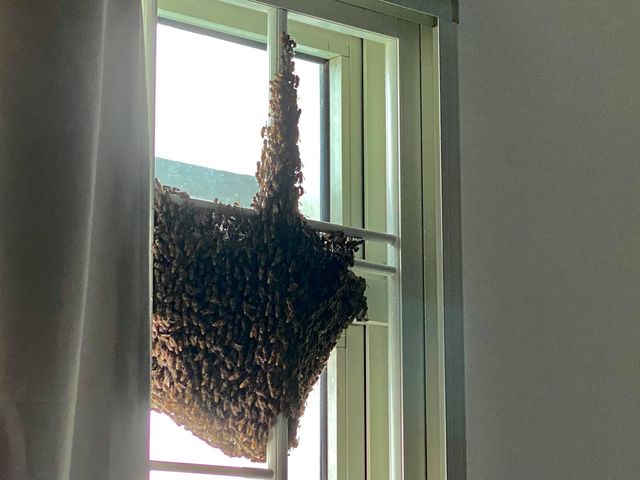 Photo from Mothership reader
Photo from Mothership reader
When the beekeeper, Norman, arrived, he proceeded to scoop the bees carefully into a box.
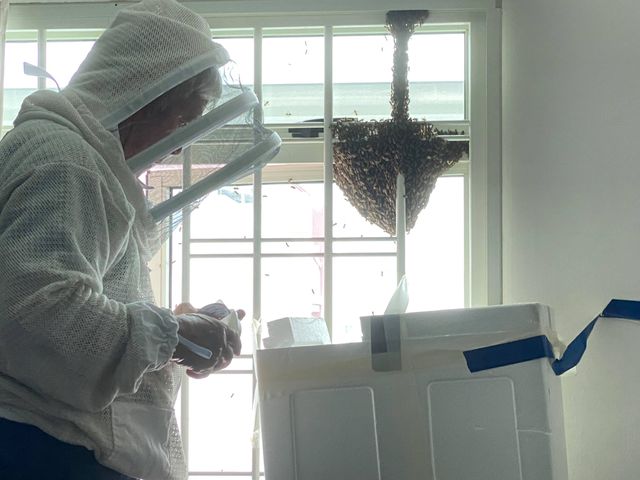 Photo from Mothership reader
Photo from Mothership reader
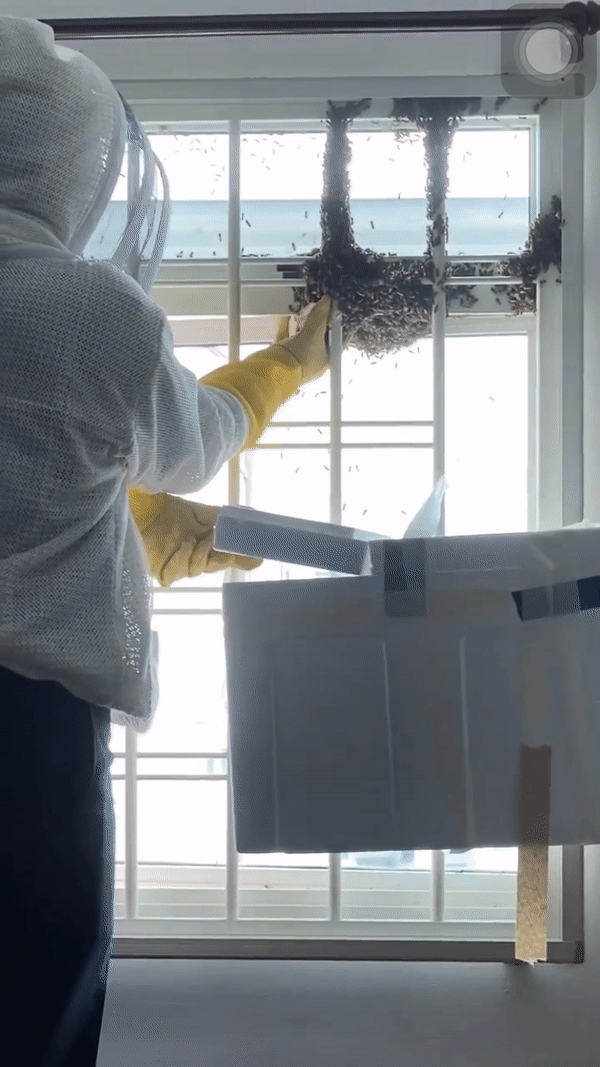 Video from Mothership reader
Video from Mothership reader
The queen bee was also identified and isolated. When in this state of swarming, bees typically follow their queen around to protect her. Removing the queen ensures that the rest of the swarm tags along as well.
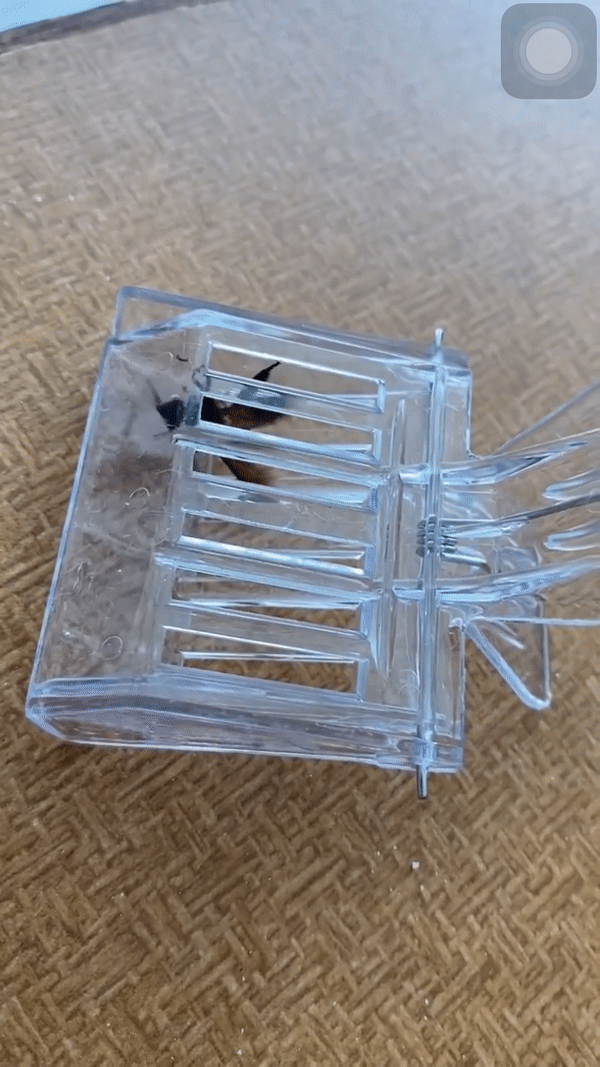 Video from Mothership reader
Video from Mothership reader
However, a second batch of bees appeared soon after the first batch was transferred into the box.
The resident shared that her worry about the situation was likely evident on her face, and Norman subsequently asked her to leave the house for a short while in order for him to remove all the bees safely.
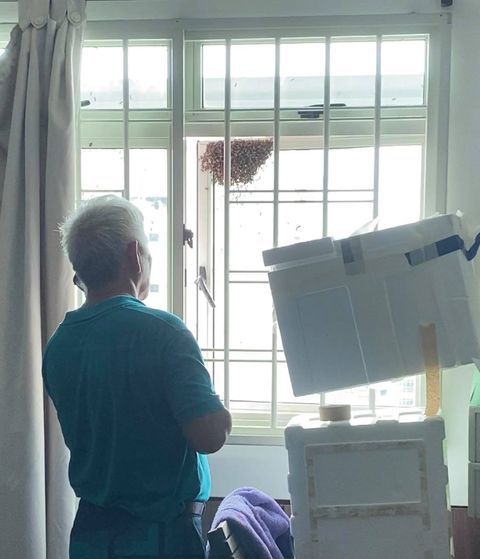 Photo from Mothership reader
Photo from Mothership reader
One hour later, the resident returned to a bee-free home.
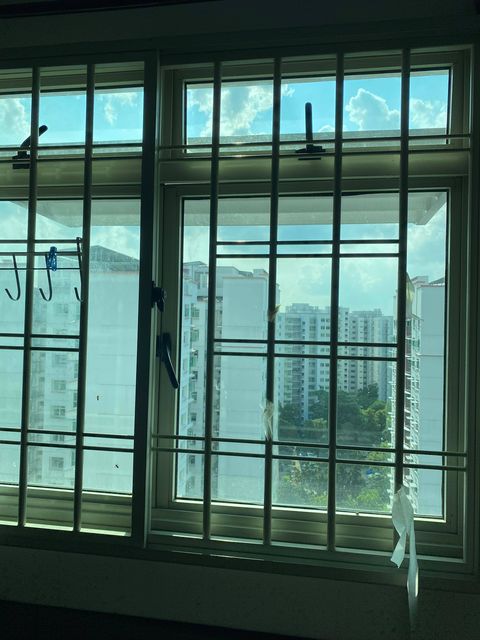 Photo from Mothership reader
Photo from Mothership reader
In total, the entire operation took around three hours.
Bees are looking for a new home
Many people's first instinct in such a situation might be to contact pest control. However, the resident said that she preferred for the bees to be removed humanely, especially since Acres had provided her with contacts.
This method was preferable for her, as exterminating the bees with pesticide would also "spread toxic smoke".
Additionally, she had done a quick Google search before the bees were removed, and realised that bees only attack when provoked.
Windows of high-level HDB flats might not be where bees are typically sighted. In fact, the bees in this incident could have been undergoing a natural process called swarming.
During this process, a group of bees will leave an existing colony to set up a new colony.
While scout bees hunt around for a suitable nesting site, the rest of the colony clusters on a tree limb or other objects — such as a HDB flat window — to rest.
When a suitable home has been found, the cluster of bees will depart and disperse.
A similar cluster, also in Punggol, was spotted in April 2021, swarming around a bamboo pole on the 15th floor.
Typically, bees are the least aggressive during this transitioning period, as the colony is preoccupied with finding a new home.
What to do when you see a beehive
Bees are not pests.
Although there exists a certain amount of fear towards bees due to their ability to sting, bees are actually extremely important to the ecosystem, and play key roles as pollinators of plants.
Should members of the public spot a beehive and wish to remove it, they can contact BEE AMAZED Garden like this Punggol resident.
Other beekeepers who offer humane bee-removal services include Xavier Tan from Nutrinests, and Clarence Chua from The Sundowner.
If members of the public spot a beehive in a park, it's best to keep a distance and leave the bees alone. You can also notify NParks at 1800 471 7300.
For more information about steps to take if you've been stung by a bee or wasp, check out NParks' advisory here.
Related stories
Top photo courtesy of Mothership reader
If you like what you read, follow us on Facebook, Instagram, Twitter and Telegram to get the latest updates.
